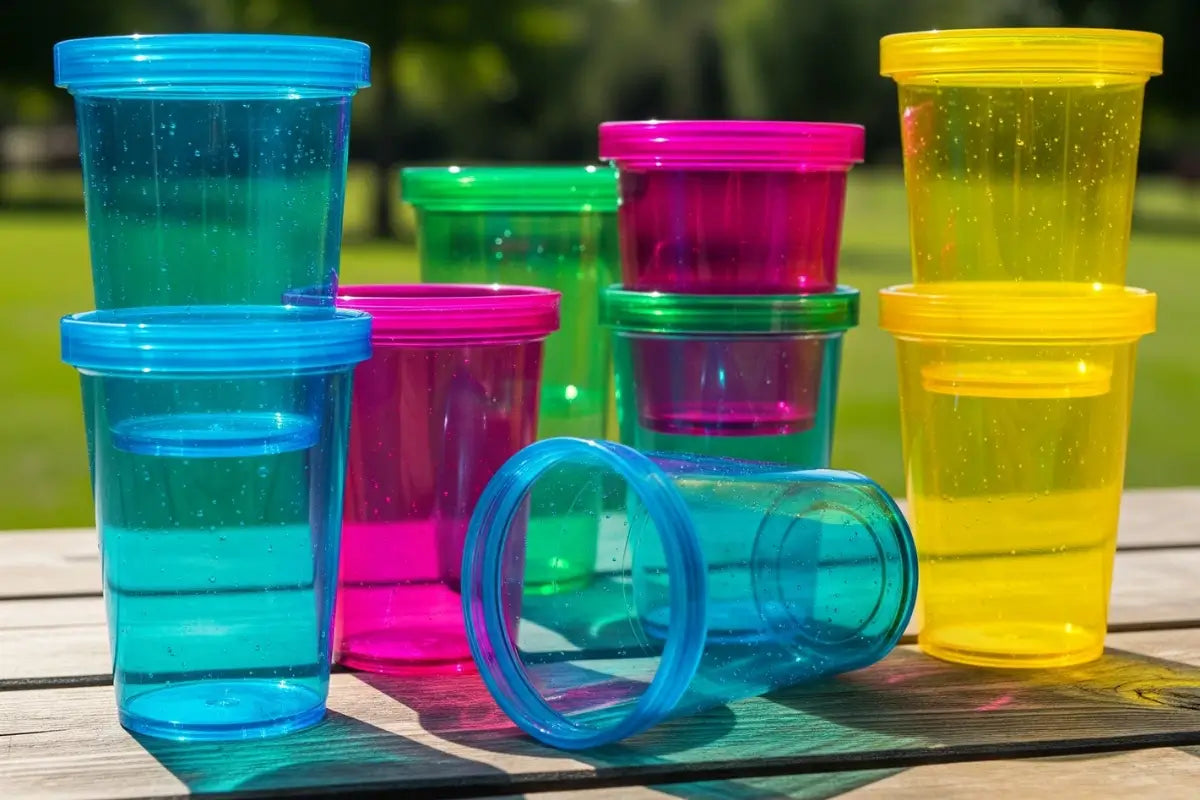Are Reusable Plastic Cups Safe?

Worried your reusable plastic cup might be doing more harm than good? You’re not alone. Hidden toxins, wear and tear, and improper cleaning can all pose health risks most people overlook.
But don’t toss them just yet, this post breaks down the facts and shows you how to use them safely without risking your health.
Table of contents
Key Takeaways
-
Avoid Heat Exposure: Heating reusable plastic cups increases chemical leaching.
-
Choose Safer Materials: opt for glass, stainless steel, or ceramic, especially for hot drinks.
-
Inspect for Damage: Replace cups with scratches or wear to reduce leaching and bacterial growth.
-
Don’t Trust “BPA-Free” Blindly: Even BPA-free plastics can release harmful chemicals.
-
Reuse Responsibly: Reusable plastic cups are eco-friendly only when used and maintained properly.
Do Reusable Plastic Cups Leach Chemicals into Beverages?
Yes, reusable plastic cups can leach chemicals into beverages, especially when heated or reused often.
According to a study, plastics like polypropylene (PP) and silicone release chemicals such as BPA and phthalates, with levels rising significantly at temperatures up to 100 °C.
According to Mayo Clinic, BPA may affect the brain and behavior of children and has been linked to health concerns like diabetes and heart disease.
To reduce risk, avoid heating plastic containers and opt for BPA-free or non-plastic alternatives like glass or stainless steel for hot drinks and frequent use.
What Chemicals Can Leach from Reusable Plastic Cups?
Reusable plastic cups, even those labeled BPA-free, can still release harmful substances. According to Environmental Health (2014), many BPA-free plastics like Tritan™ leach chemicals with estrogenic activity (EA), especially when exposed to heat or UV light.
According to the FDA, heat and repeated use can increase chemical leaching, and while the amounts are considered small, long-term exposure may pose risks.
Soft plastics like PET may also release phthalates into beverages. According to the U.S. Food and Drug Administration, microplastics may be present in food and drink, though more research is needed on packaging-related transfer.
Does Coffee Increase the Leaching Rate in Plastic Cups?
Hot coffee increases chemical leaching from plastic cups, especially from polystyrene, polycarbonate, and PET.
Heat accelerates the release of BPA, phthalates, and styrene. Studies confirm higher leaching at elevated temperatures. Use ceramic, glass, or stainless steel instead of plastic for hot beverages.

Are Reusable Plastic Cups Safer Than Paper Cups in Terms of Toxicity?
Reusable plastic and paper cups both pose toxicity risks, especially when exposed to heat.
Plastic cups can leach BPA, phthalates, and microplastics, while paper cups' plastic linings may release microplastics and chemicals. Neither is clearly safer; alternatives like glass or stainless steel are preferable.

What’s the Difference Between Single‑Use and Reusable Plastic Cup Safety?
Single-use plastic cups pose chemical and hygiene risks when reused or heated, and have low heat resistance and high environmental impact.
Reusable cups, made from safer plastics, are more durable and heat-resistant but require proper cleaning. Overall, reusable cups offer safer, more sustainable use when maintained correctly.
How Does Wear and Tear Affect the Safety of Reusable Plastic Cups?
Wear and tear on reusable plastic cups can lead to chemical leaching and bacterial growth. Cracks, scratches, and discoloration signal damage, making cleaning difficult and increasing health risks.
Avoid reusing single-use plastics; instead, use durable types and replace any cups showing visible signs of deterioration.
Are Reusable Plastic Cups Environmentally Friendly?
Reusable plastic cups can be environmentally friendly if reused frequently, ideally 7–25 times, to offset their production impact.
They reduce waste, conserve resources, and lower carbon emissions compared to single-use cups. However, their benefits depend on material type and proper recycling at end-of-life.





